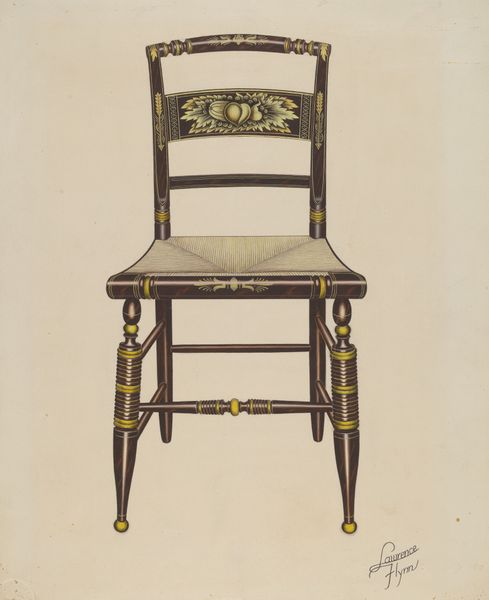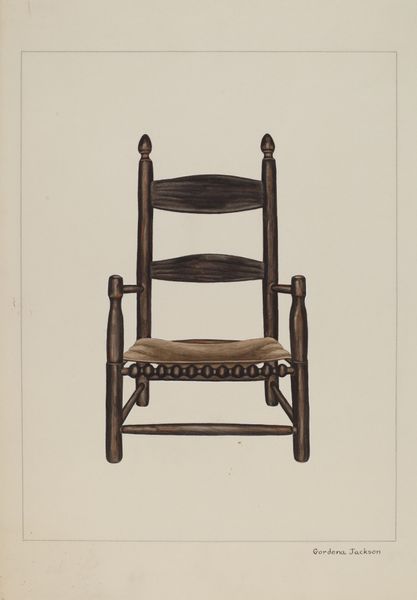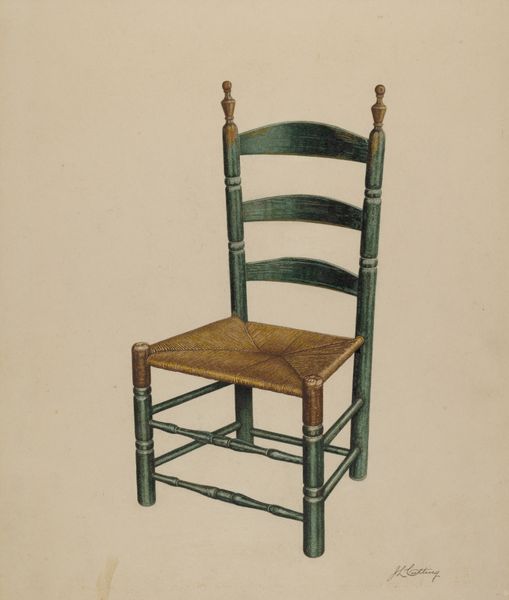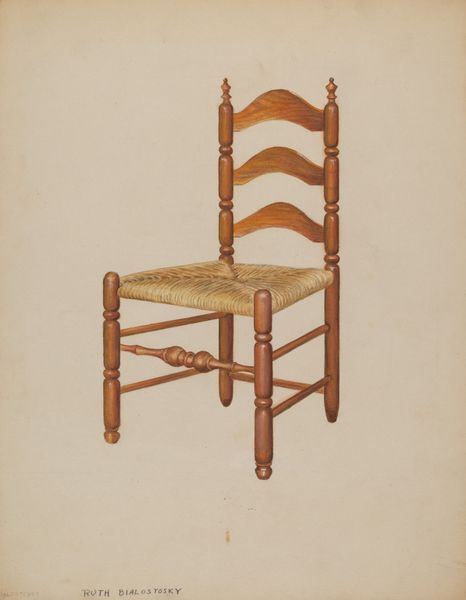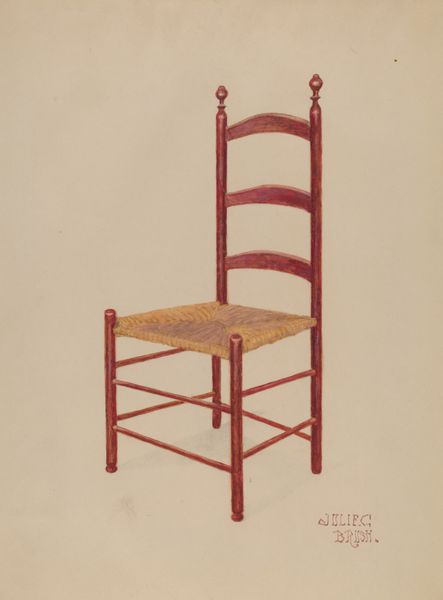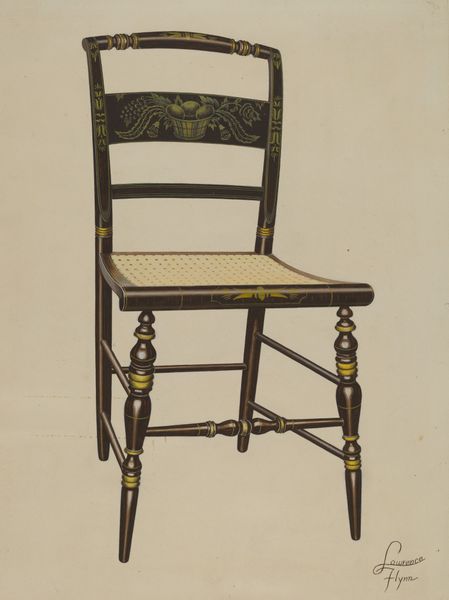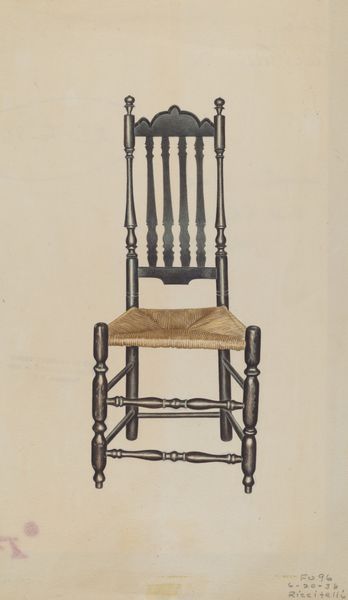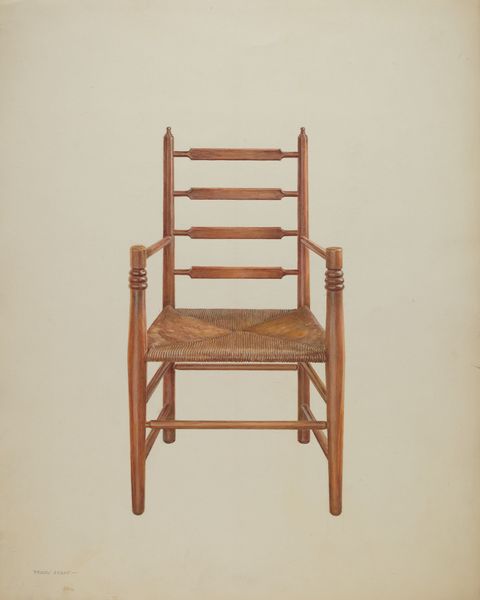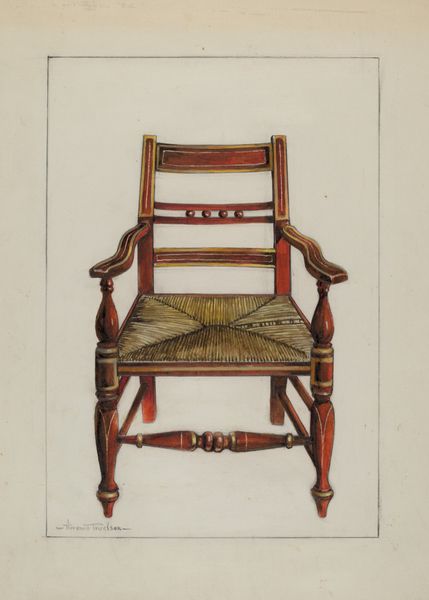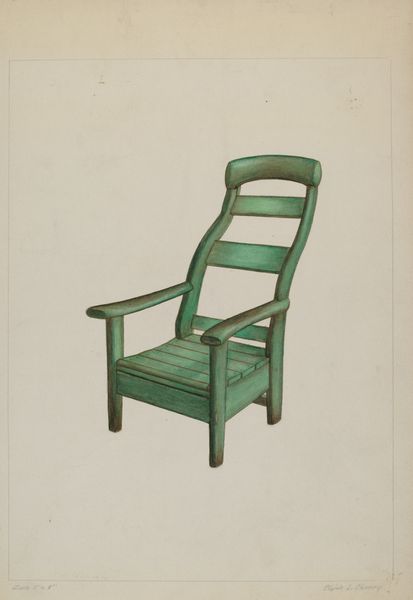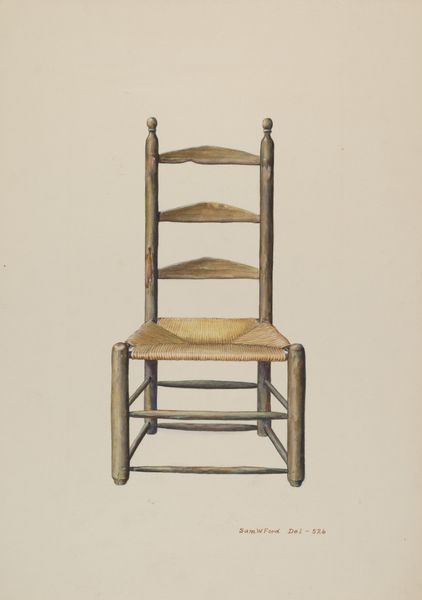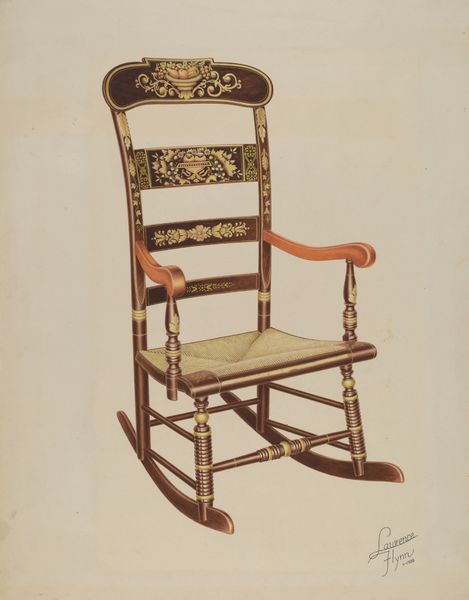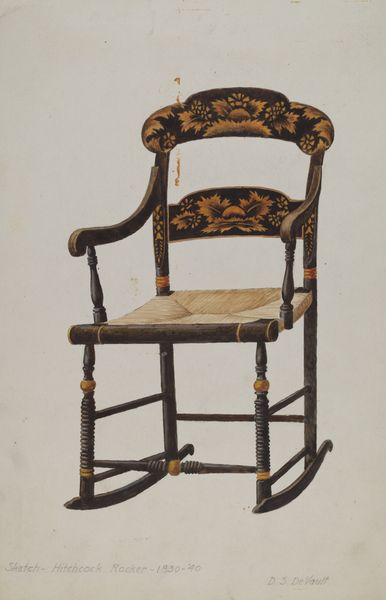
drawing, painting, watercolor
#
drawing
#
toned paper
#
painting
#
watercolor
#
watercolour illustration
#
realism
Dimensions: overall: 31.9 x 22.7 cm (12 9/16 x 8 15/16 in.) Original IAD Object: 3'3"high, 18 1/2" wide
Copyright: National Gallery of Art: CC0 1.0
Curator: Here we have a watercolor drawing titled "Ladderback Chair," dating to around 1936, by Gerald Bernhardt. What strikes you immediately about it? Editor: Well, visually, it's quite simple. The high contrast between the black frame and the bright yellow seat really pops, and it looks surprisingly modern for its age. But I wonder, what does the chair *represent* in the context of that era? Curator: Exactly. Consider the socio-economic landscape of the 1930s. The Depression heavily impacted labor and material production. Furniture, once a symbol of stability and domesticity, was fraught with meaning. This chair, with its seemingly hand-woven seat, raises questions about accessibility, craftsmanship versus mass production, and who has the privilege to sit. Editor: Right. I’m interested in the craft behind it, given the material. You mentioned the woven seat; I see what looks like traditional rush or perhaps even corn husks carefully intertwined. The labor involved in such a construction highlights the value—or devaluing—of manual skills during a time of increasing industrialization. How might the design influence consumption? Curator: Its design is particularly fascinating because while appearing functional, it borders on ornamental, doesn’t it? There is decorative detail along the slats. Given the economic climate, this artwork could represent a yearning for handcrafted, personalized objects during a time of mass-produced goods. Or, a critique of such yearning when everyday objects need to be cheap and functional for many? The question of aspiration is so relevant to furniture's place within the politics of interiors. Editor: You’re drawing an important connection to the decorative process of its crafting! To bring this artwork’s commentary home, so to speak, looking at the image now after our talk makes me consider its artistic choices beyond aesthetics, towards cultural symbolism within furniture production. Curator: Yes! And it becomes an opening for many inquiries related to taste, gender, and class during its time.
Comments
No comments
Be the first to comment and join the conversation on the ultimate creative platform.
